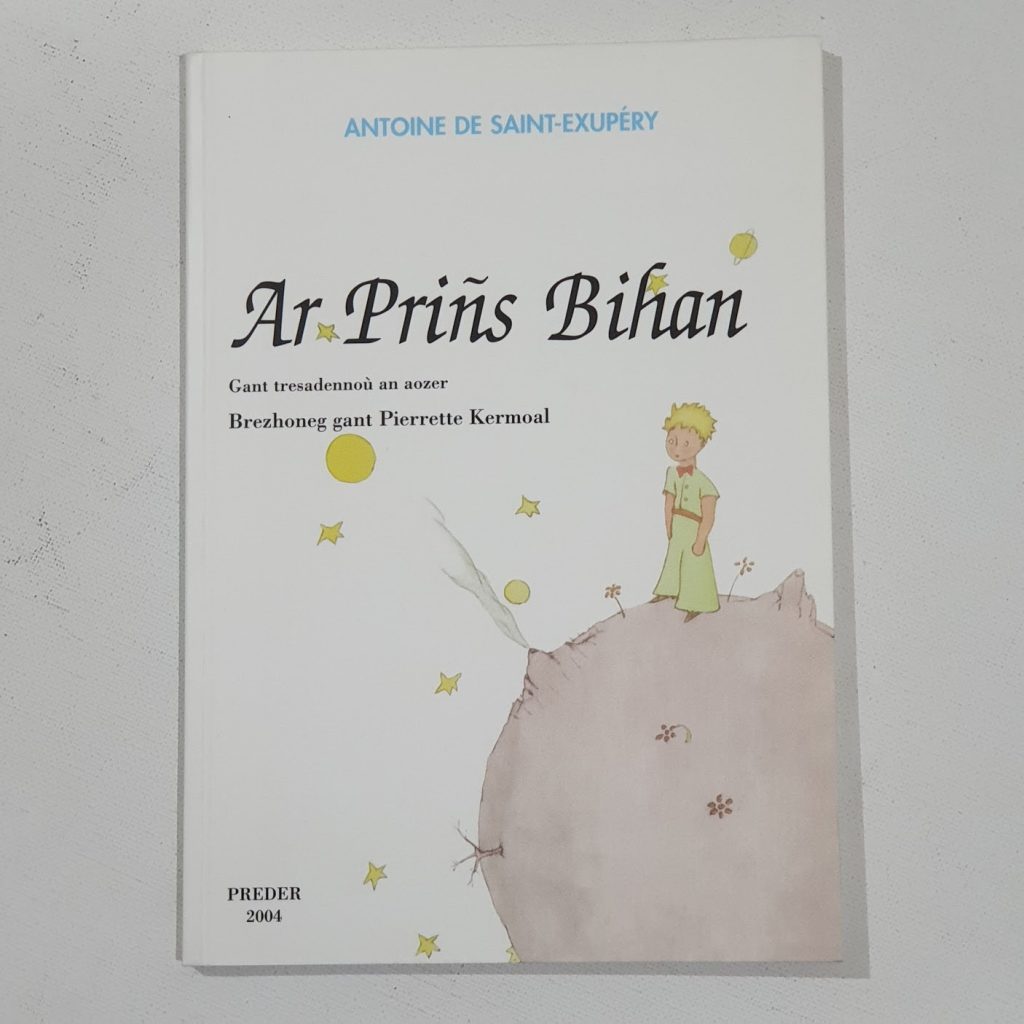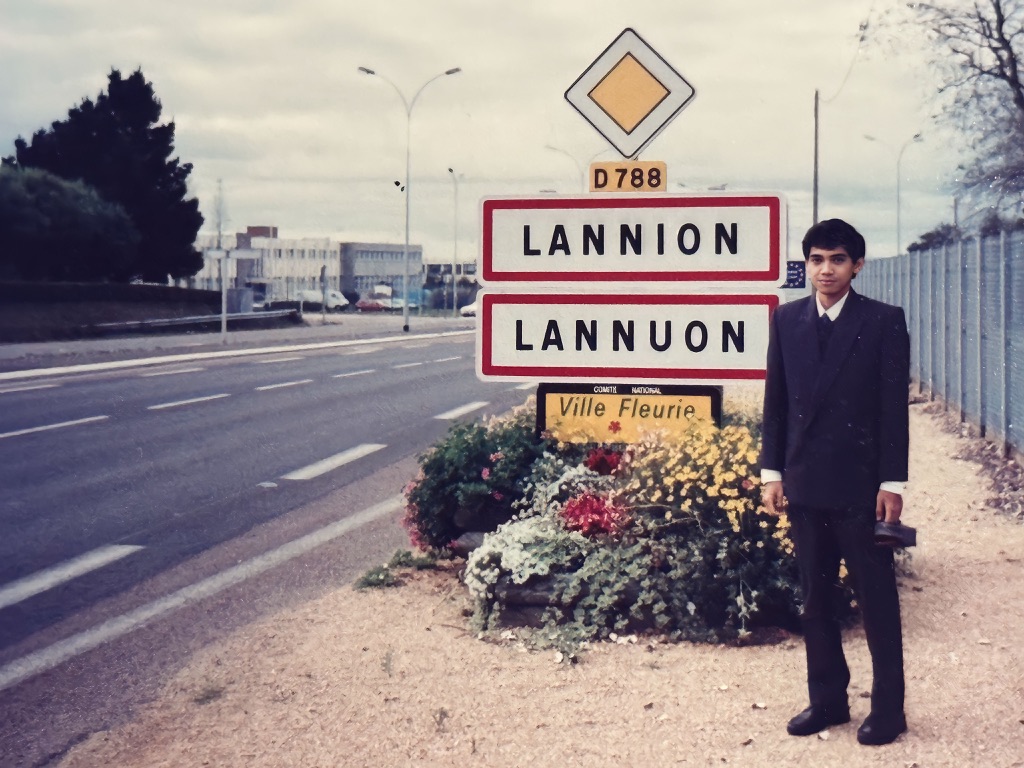
Ar Priñs Bihan, in Breton (Brezhoneg).
Breton is a Celtic language spoken in Brittany (Bretagne). It is also the last and only Celtic language in use on the European mainland. Bretagne should remind you to Astérix the Gaul. But for me, it reminds me to my first journey overseas. Paris is the first city I visited, but then I spent one week in Bretagne: Lannion, Perros-Guirec, Pleumeur-Bodou, Guingamp, etc.
Breton is spoken in Lower Brittany (Breizh-Izel), roughly to the west of a line linking Plouha (west of Saint-Brieuc) and La Roche-Bernard (east of Vannes). It comes from a Brittonic language community that once extended from Great Britain to Armorica (present-day Brittany) and had even established a toehold in Galicia (in present-day Spain). Breton is most closely related to Cornish, another Southwestern Brittonic language. Welsh and the extinct Cumbric, both Western Brittonic languages, are more distantly related.
Old Breton is attested from the 9th century. It was the language of the upper classes until the 12th century, after which it became the language of commoners in Lower Brittany. The nobility, followed by the bourgeoisie, adopted French. The written language of the Duchy of Brittany was Latin, switching to French in the 15th century. There exists a limited tradition of Breton literature. Some philosophical and scientific terms in Modern Breton come from Old Breton. The recognized stages of the Breton language are: Old Breton – c.800 to c.1100, Middle Breton – c.1100 to c.1650, Modern Breton – c.1650 to present.

Having declined from more than 1 million speakers around 1950 to about 200,000 in the first decade of the 21st century, Breton is classified as “severely endangered” by the UNESCO Atlas of the World’s Languages in Danger.


